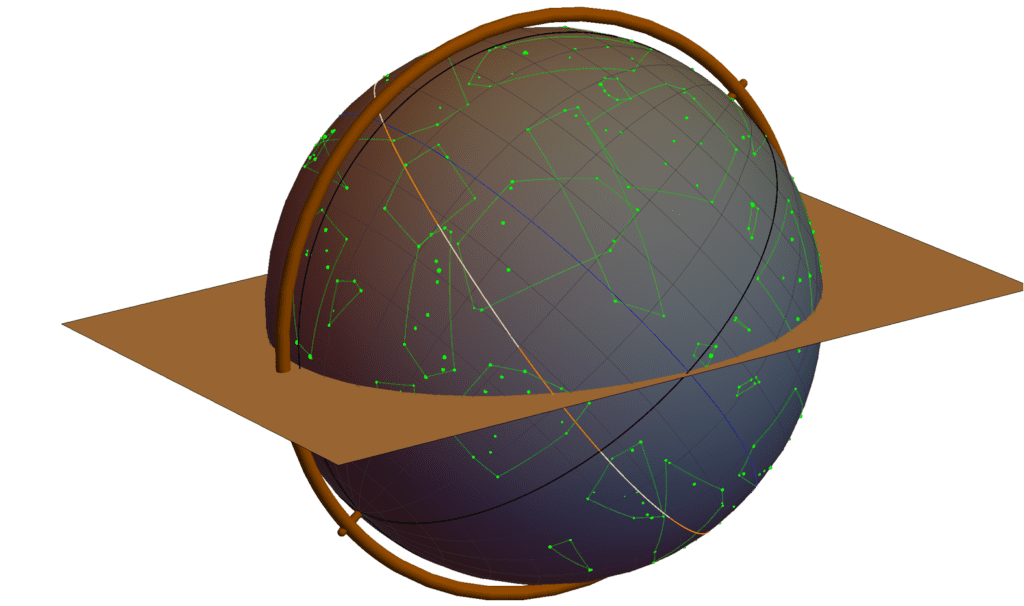Researchers thought they were analyzing a seemingly bland parchment from a monastery in Egypt — but as it turns out, they had uncovered a real treasure. Hidden under Christian texts lay one of the most famous astronomical artifacts in the world.

Over 2100 years ago, the Ancient Greek astronomer Hipparchus made a catalog of the night sky. Hipparchus was also a geographer and a mathematician, and he was already famous for his discovery of the precession of the equinoxes. His approach was remarkably scientific and with mathematical techniques acquired from Greek and Babylonian scholars, he made many valuable observations — he even produced the first quantitative and accurate models for the motion of the Sun and the Moon. Unsurprisingly, for his many contributions, Hipparchus is regarded by many as the “Father of astronomy.”
But perhaps his most remarkable contribution is the compilation of the first comprehensive star catalog of the western world.
Unfortunately, Hipparchus’ mythical star catalog seemed impossible to find. Scholars have been looking for it for centuries. It was gone for so long that many thought it was forever lost. But a breakthrough came in 2012 when a student called Jamie Klair found something weird behind the lettering of a Christian manuscript.
Klair noticed a famous star-origin myth in Greek that was often attributed to Eratosthenes, an astronomer and the chief librarian at the Library of Alexandria. He informed his supervisor, biblical scholar Peter Williams. Williams thought it was interesting, but didn’t give it all that much thought.
A few years later, in 2017, a multispectral scan of the document revealed nine folios of pages containing a text that appeared to have been written over.
This isn’t all that unusual: parchment was, for centuries, a very scarce commodity, and it was common for parchment pieces to be reused. During the pandemic, Williams gave the results another look. In addition to a famous third-century-BC poem called Phaenomena that describes Greek constellations and the Eratosthenes myth, he noticed another weird part — so he sent the results to science historian Victor Gysembergh at the French National Scientific Research Centre CNRS in Paris. As soon as Gysembergh looked at it, he knew it was something special. “I was very excited from the beginning,” says Gysembergh. “It was immediately clear we had star coordinates.”
The paragraph specifically reads:
“Corona Borealis, lying in the northern hemisphere, in length spans 9°¼ from the first degree of Scorpius to 10°¼8 in the same zodiacal sign (i.e. in Scorpius). In breadth it spans 6°¾ from 49° from the North Pole to 55°¾.
Within it, the star (β CrB) to the West next to the bright one (α CrB) leads (i.e. is the first to rise), being at Scorpius 0.5°. The fourth9 star (ι CrB) to the East of the bright one (α CrB) is the last (i.e. to rise) [. . .]10 49° from the North Pole. Southernmost (δ CrB) is the third counting from the bright one (α CrB) towards the East, which is 55°¾ from the North Pole.”
This is exactly the type of observation you’d expect Hipparchus to make. But not wanting to jump to conclusions, researchers calculated at what point in history the star catalog was made (this can be done by calculating the Earth’s precession which causes the star position to drift year after year). They found that the coordinates of the stars match the precession expected of our planet around 129 BCE — within Hipparchus’ lifetime.

There’s no way to be 100% certain that this is indeed Hiparrchus’ text, but in addition to the timeline fitting, researchers note the precision of the measurements and the idiosyncratic way in which some of the data is explained. Basically, everything points at Hipparchus.
Until now, the oldest star catalog that survived from antiquity was compiled by another ancient astronomer: Claudius Ptolemy, in Alexandria, Egypt. However, Ptolemy notes several times that Hipparchus compiled an earlier catalog over two centuries earlier — but even so, many historians suspected that Hipparchus’ catalog may have only been a myth.
To his credit, Ptolemy did not simply copy measurements from Hipparchus… but maybe he should have. Hipparchus measurements seem to be more accurate, sometimes to within one degree. In addition, whereas Ptolemy used the ecliptic coordinate system, Hipparchus used a system relying on the celestial equator, which is more common in modern star maps.
Hipparchus himself benefitted from precise measurements made by the Babylonians, but the Babylonians had no interest other than using these observations for their celestial omens and for things like eclipses, while Hipparchus basically founded the field of astronomy, turning observations into a three-dimensional model that was quantifiable and predictable.
The study was published in the Journal for the History of Astronomy.









